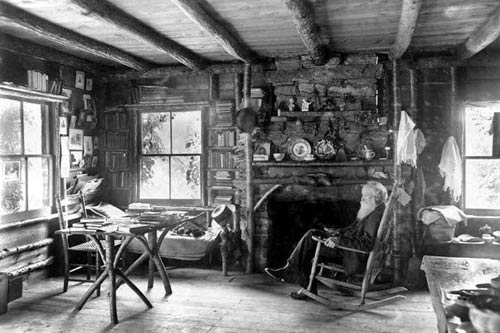
Slabsides in West Park is the name of the cabin that John Burroughs built in 1895. It was in this building that Burroughs (shown above) wrote some of the essays that made him America’s foremost nature writer of his time, as well as entertaining such callers as Theodore Roosevelt, John Muir, Thomas Edison, Walt Whitman and Henry Ford, up until his death in 1921. Designated a National Historic Landmark in 1968, Slabsides is preserved today much as Burroughs left it. Slabs of lumber with their bark still on cover the exterior walls, and the rustic red cedar posts that Burroughs helped set in place still uphold the porch. Inside the cabin, the furniture that Burroughs used (and much of which he made) remains as it was.
Leaders of the John Burroughs Association and Scenic Hudson are planning a multi-modal trail along the Black Creek that will center on Slabsides, Burroughs’ historic writing cabin in West Park and its beautiful surrounding nature trails. According to Scenic Hudson urban designer Peter Barnard, the trail concept relies on minimal land acquisition, with the option of adding additional improvements as funds allow.
As it now stands, the first leg of the trail from Berean Park in Highland will be for bicycles. The middle section, accessible only by kayak on the Black Creek, will end with the third leg, a walking and running trail fully in Esopus. While it is hoped that bicycle or pedestrian access can eventually be obtained for the entire trail length, the multi-modal approach allows for a relatively short time until opening. It also may provide future opportunity for some kind of triathlon.
Public interest in this corridor being stitched together is high, Barnard reported, with 65 people attending a recent meeting held in Esopus. The planning phase to detail the connections needed along the route should also identify additional funding sources for future improvements such as trailheads, parking areas and bicycle bridges.
The trail would create or dovetail with economic opportunities already identified.
